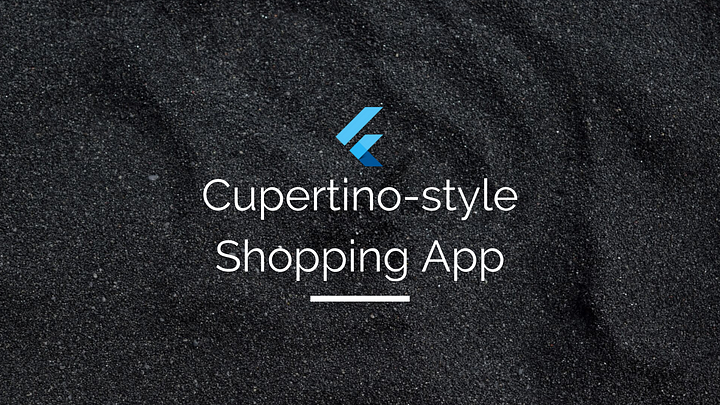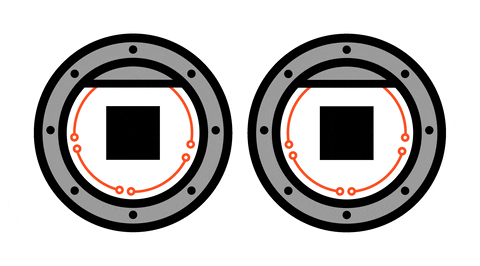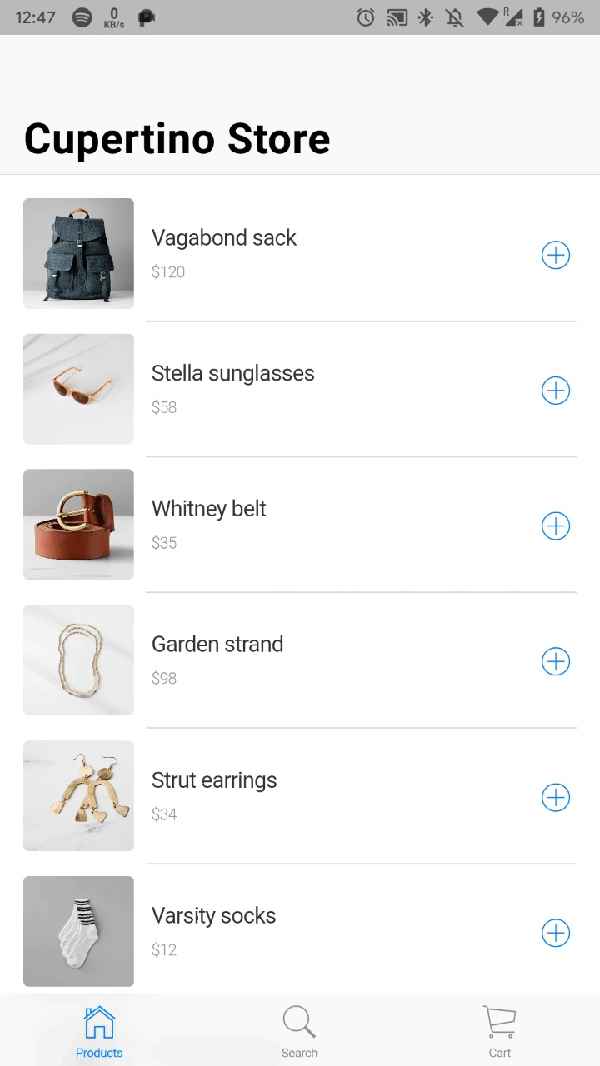Building an iOS-style Shopping App with minimalistic design using Flutter

Introduction
The Material Design language was created for any platform, not just Android. When you write a Material app in Flutter, it has the Material look and feels on all devices, even iOS. If you want your app to look like a standard iOS-styled app, then you would use the Cupertino library.
You can technically run a Cupertino app on either Android or iOS, but (due to licensing issues) Cupertino won’t have the correct fonts on Android. For this reason, use an iOS-specific device when writing a Cupertino app.
What you’ll build?
In this tutorial, you’ll build a shopping app with an iOS materialistic design using the Flutter SDK. Your app will have:
- Three tabs for Products, Search and Cart.
- Holistic flow for buying any product.
- Use the
providerpackage to manage state between screens.

This tutorial focuses on building important components and Cupertino layout. Non-relevant concepts and code blocks are glossed over and are provided for you to simply copy and paste.
Github Repository | @ShivamGoyal1899
Building an iOS-style Shopping App with minimalistic design - ShivamGoyal1899/CupertinoShoppingAppgithub.com
Package Used | provider
Setting up Flutter on your machine
The detailed steps to install Flutter on your personal computer & getting started with Flutter is available at the following blog post
Coding the application
Create the initial Cupertino app
- Create a simple templated Flutter app, using the instructions in the above blog. Name the project cupertino_store. You’ll be modifying this starter app to create the finished app.
- Replace the contents of
main.dartwith the following code.
- Add a file to the
libdirectory calledstyles.dart. TheStylesclass defines the text and color styling to customize the app.
- Add the following
CupertinoStoreAppclass tolib/app.dart.
- Add the following
CupertinoStoreHomePageclass tolib/app.dartto create the layout for the homepage.
- At the top of the project, edit the
pubspec.yamlfile. Add the libraries that you will need, and a list of the image assets.
Create the structure for a 3-tab app

- The final app features 3 tabs:
Product list | Product search | Shopping cart - Replace the
CupertinoStoreHomePageclass with the following, which sets up a 3-tab scaffold:
- Create a
lib/product_list_tab.dartfile for the first tab that compiles cleanly, but only displays a white screen. Use the following content:
- Create a
lib/search_tab.dartfile that compiles cleanly, but only displays a white screen. Use the following content:
- Create a
lib/shopping_cart_tab.dartfile that compiles cleanly, but only displays a white screen. Use the following content:
- Update the import statements in
lib/app.dartto pull in the new tab widgets:
Add state management
- Create a
modeldirectory underlib. Add alib/model/product.dartfile that defines the product data coming from the data source:
- Create a
lib/model/products_repository.dartfile. This file contains all products for sale. Each product belongs to a category.
- Here is the list of method signatures provided by this class.
- In the
main()method, initialize the model. Add the lines marked with NEW.
List products for sale
- Create the
lib/product_row_item.dart file, with the following content:
- In
lib/product_list_tab.dart, import theproduct_row_item.dartfile.
import 'package:flutter/cupertino.dart';
import 'package:provider/provider.dart';
import 'model/app_state_model.dart';
import 'product_row_item.dart'; // NEW- In the
build()method forProductRowTab, get the product list and the number of products. Add the new lines indicated below:
- Also in the
build()method, add a new sliver to the sliver widgets list to hold the product list. Add the new lines indicated below:
Add product search

- Update the imports in
lib/search_tab.dart. Add imports for the classes that the search tab will use:
- Update the
build()method in_SearchTabState. Initialize the model and replace theCustomScrollViewwith individual components for searching and listing.
- Add supporting variables, functions, and methods to the
_SearchTabStateclass. These includeinitState(),dispose(),_onTextChanged(), and_buildSearchBox(), as shown below:
- Create a new file,
lib/search_bar.dart. TheSearchBarclass handles the actual search in the product list. Seed the file with the following content:
Add customer info
- Update the
lib/shopping_cart_tab.dartfile. Add private methods for building the name, email, and location fields. Then add a_buildSliverChildBuildDelegate()method that build out parts of the user interface.
- Update the
build()method in the_SearchTabStateclass. Add aSliverSafeAreathat calls the_buildSliverChildBuildingDelegatemethod:
Add date picker
- Add imports and a
consttolib/shopping_cart_tab.dart. Add the new lines, as shown:
- Add a
_buildDateAndTimePicker()function to the_ShoppingCartTabwidget. Add the function, as follows:
- Add a call to build the date and time UI, to the
_buildSliverChildBuilderDelegatefunction. Add the new code, as shown:
Add selected items for purchase
- Import the product package in
shopping_cart_tab.dart.
import 'model/product.dart';- Add a currency format to the
_ShoppingCartTabStateclass.
final _currencyFormat = NumberFormat.currency(symbol: '\$');- Add a product index to the
_buildSliverChildBuilderDelegatefunction.
SliverChildBuilderDelegate _buildSliverChildBuilderDelegate(
AppStateModel model) {
return SliverChildBuilderDelegate(
(context, index) {
final productIndex = index - 4; // NEW
switch (index) {]
// ...- In the same function, display the items to purchase. Add the code to the
default:section of the switch statement, as follows:
Building & running the application
- Connect your Emulator or physical Android device to test the application.
- Click on Build & Run.
- And Boooom 🔥, your app is ready.
The final build would look like the below illustration.

Flutter Full App | Enappd
Get the latest and amazing Flutter Full App. It is loaded with a large number of options, layouts, and functionalities…store.enappd.com





